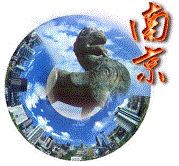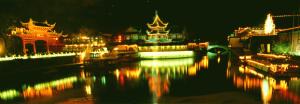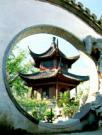ST. LOUIS SISTER CITIES PROGRAM
WATCH VIDEO: Nanjing & St. Louis 40 Plus Years of Friendship
Who We Are:
In 1979, St. Louis was linked with the city of Nanjing (formally Nanking) and became the first U.S. municipality to have a sister city in the People’s Republic of China. Inspired by President Dwight Eisenhower , Sister Cities International pairs communities throughout the world. Sister cities conduct, educational, cultural, municipal and economic exchanges that promote mutual understanding. The St. Louis – Nanjing Sister City Committee has sponsored many exchanges that have touched thousands of people in our two communities from school children to corporate leaders. Mayors of both cities have led official trade delegations and given enthusiastic support to our sister city activities.
What We Do:
The Nanjing Committee organizes special trips to the People’s Republic of China highlighted by visits to our sister city. These trips offer exceptionally qualified tour leaders from the U.S. and China and the special hospitality extended by Nanjing. These trips encompass the business, educational, and cultural exchange efforts of the committee that are meant to create long term sustainable benefits for both St. Louis and the city of Nanjing.
The City of Nanjing:
Nanjing is the capital city of Jiangsu with a population of 4.5 million. Owing to its superior geographic location, the city has remained the transportation center of the Yangzi Delta region. Once prospering on its shipyards, Nanjing has now grown into a commercial hub and cultural center of southeast China.
For almost 2,000 years, Nanjing (“China’s Southern Capital”) has witnessed some of the most significant events in Chinese history, including its position as the nation’s capital during the Six Dynasties (220-589 AD) and the Southern Song Dynasty (1127-1279 AD), the onset of the Ming Dynasty in 1368 by Zhu Yuanzhang who made Nanjing capital for almost two decades, the signing of the Sino-British treaty in 1842 that ceded Hong Kong to Britain, and its most painful moment, the Nanjing Massacre.
For tourists, Nanjing is one of China’s most attractive cities. The city has a balanced layout between traditional and modern architecture. Its many broad boulevards are well shaded from the summer heat by tall trees. The riverbank by the Yangzi River reflects serene night views; the beautiful and quiet Xuanwu Lake and its forested islands soften the tough edges of a commercial metropolitan skyline.
A must-see of Nanjing is Dr. Sun Yatsen’s Mausoleum, where the father of modern China is buried on the mountaintop of Zijinshan. The pilgrimage trip to the tomb is composed of an enormous stone stairway, 323 meters long and 70 meters wide. The scene is respectfully magnificent.
Another important site in Nanjing is the Memorial of the Nanjing Massacre, which exhibits documents and pictures of the atrocities by Japanese troops in 1937, a painful moment for the city and its residents. Also on display is furniture used at the signing of Japan’s surrender to China. The exhibits conclude on a more optimistic note, with the last room dedicated to the post-war Sino-Japanese reconciliation.



